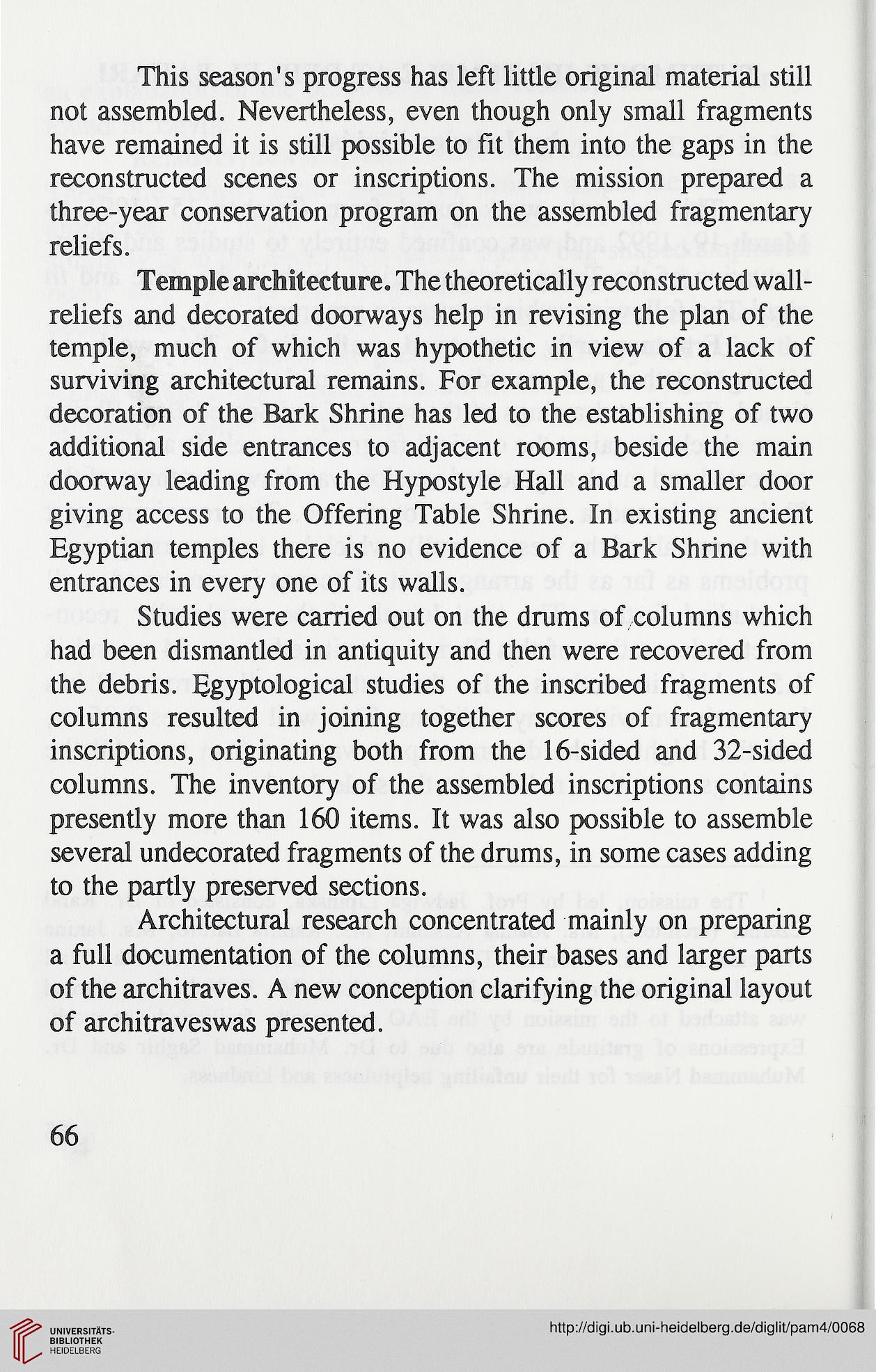This season's progress has left little original material still
not assembled. Nevertheless, even though only small fragments
have remained it is still possible to fit them into the gaps in the
reconstructed scenes or inscriptions. The mission prepared a
three-year conservation program on the assembled fragmentary
reliefs.
Temple architecture. The theoretically reconstructed wall-
reliefs and decorated doorways help in revising the plan of the
temple, much of which was hypothetic in view of a lack of
surviving architectural remains. For example, the reconstructed
decoration of the Bark Shrine has led to the establishing of two
additional side entrances to adjacent rooms, beside the main
doorway leading from the Hypostyle Hall and a smaller door
giving access to the Offering Table Shrine. In existing ancient
Egyptian temples there is no evidence of a Bark Shrine with
entrances in every one of its walls.
Studies were carried out on the drums of columns which
had been dismantled in antiquity and then were recovered from
the debris. Egyptological studies of the inscribed fragments of
columns resulted in joining together scores of fragmentary
inscriptions, originating both from the 16-sided and 32-sided
columns. The inventory of the assembled inscriptions contains
presently more than 160 items. It was also possible to assemble
several undecorated fragments of the drums, in some cases adding
to the partly preserved sections.
Architectural research concentrated mainly on preparing
a full documentation of the columns, their bases and larger parts
of the architraves. A new conception clarifying the original layout
of architraveswas presented.
66
not assembled. Nevertheless, even though only small fragments
have remained it is still possible to fit them into the gaps in the
reconstructed scenes or inscriptions. The mission prepared a
three-year conservation program on the assembled fragmentary
reliefs.
Temple architecture. The theoretically reconstructed wall-
reliefs and decorated doorways help in revising the plan of the
temple, much of which was hypothetic in view of a lack of
surviving architectural remains. For example, the reconstructed
decoration of the Bark Shrine has led to the establishing of two
additional side entrances to adjacent rooms, beside the main
doorway leading from the Hypostyle Hall and a smaller door
giving access to the Offering Table Shrine. In existing ancient
Egyptian temples there is no evidence of a Bark Shrine with
entrances in every one of its walls.
Studies were carried out on the drums of columns which
had been dismantled in antiquity and then were recovered from
the debris. Egyptological studies of the inscribed fragments of
columns resulted in joining together scores of fragmentary
inscriptions, originating both from the 16-sided and 32-sided
columns. The inventory of the assembled inscriptions contains
presently more than 160 items. It was also possible to assemble
several undecorated fragments of the drums, in some cases adding
to the partly preserved sections.
Architectural research concentrated mainly on preparing
a full documentation of the columns, their bases and larger parts
of the architraves. A new conception clarifying the original layout
of architraveswas presented.
66




